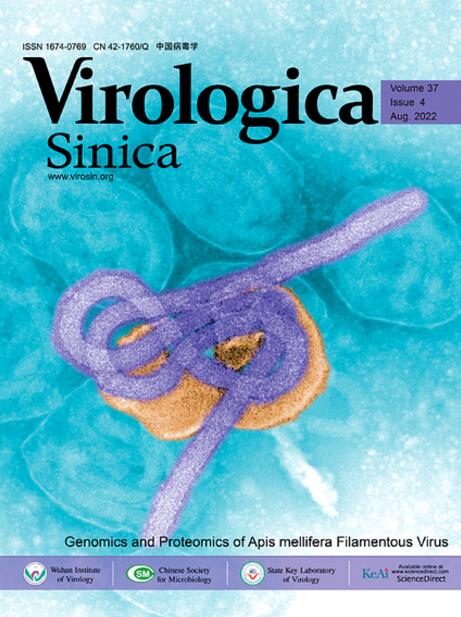A multi-center study on genetic variations in the fusion protein of respiratory syncytial virus from children with Acute Lower Respiratory Tract Infections in China during 2017–2021
IF 5.5
3区 医学
Q1 Medicine
引用次数: 0
Abstract
Respiratory syncytial virus (RSV) is a significant cause of acute lower respiratory tract infection (ALRTI) in children under five years of age. Between 2017 and 2021, 396 complete sequences of the RSV F gene were obtained from 500 RSV-positive throat swabs collected from ten hospitals across nine provinces in China. In addition, 151 sequences from China were sourced from GenBank and GISAID, making a total of 549 RSV F gene sequences subjected to analysis. Phylogenetic and genetic diversity analyses revealed that the RSV F genes circulating in China from 2017 to 2021 have remained relatively conserved, although some amino acids (AAs) have undergone changes. AA mutations with frequencies ≥ 10% were identified at six sites and the p27 region: V384I (site I), N276S (site II), R213S (site Ø), and K124N (p27) for RSV A; F45L (site I), M152I/L172Q/S173 L/I185V/K191R (site V), and R202Q/I206M/Q209R (site Ø) for RSV B. Comparing mutational frequencies in RSV-F before and after 2020 revealed minor changes for RSV A, while the K191R, I206M, and Q209R frequencies increased by over 10% in RSV B. Notably, the nirsevimab-resistant mutation, S211N in RSV B, increased in frequency from 0% to 1.15%. Both representative strains aligned with the predicted RSV-F structures of their respective prototypes exhibited similar conformations, with low root-mean-square deviation values. These results could provide foundational data from China for the development of RSV mAbs and vaccines.
2017-2021 年中国急性下呼吸道感染患儿呼吸道合胞病毒融合蛋白基因变异多中心研究。
呼吸道合胞病毒(RSV)是导致五岁以下儿童急性下呼吸道感染(ALRTI)的重要原因。2017年至2021年间,从中国9个省10家医院采集的500份RSV阳性咽拭子中获得了396个RSV F基因的完整序列。此外,还从 GenBank 和 GISAID 中获取了 151 条来自中国的序列,因此共有 549 条 RSV F 基因序列接受了分析。系统发育和遗传多样性分析显示,2017年至2021年在中国流行的RSV F基因保持了相对保守的状态,但部分氨基酸(AA)发生了变化。在6个位点和p27区域发现了频率≥10%的AA突变:在 RSV A 中发现了 V384I(位点 I)、N276S(位点 II)、R213S(位点 Ø)和 K124N(p27);在 RSV B 中发现了 F45L(位点 I)、M152I/L172Q/S173L/I185V/K191R(位点 V)和 R202Q/I206M/Q209R(位点 Ø)。比较 2020 年前后 RSV-F 的突变频率发现,RSV A 的突变频率变化较小,而 RSV B 的 K191R、I206M 和 Q209R 频率增加了 10%以上。与各自原型的 RSV-F 预测结构对齐的两个代表性菌株均表现出相似的构象,均方根偏差值较低。这些结果可为中国开发 RSV mAbs 和疫苗提供基础数据。
本文章由计算机程序翻译,如有差异,请以英文原文为准。
求助全文
约1分钟内获得全文
求助全文
来源期刊

Virologica Sinica
Biochemistry, Genetics and Molecular Biology-Molecular Medicine
CiteScore
7.70
自引率
1.80%
发文量
3149
期刊介绍:
Virologica Sinica is an international journal which aims at presenting the cutting-edge research on viruses all over the world. The journal publishes peer-reviewed original research articles, reviews, and letters to the editor, to encompass the latest developments in all branches of virology, including research on animal, plant and microbe viruses. The journal welcomes articles on virus discovery and characterization, viral epidemiology, viral pathogenesis, virus-host interaction, vaccine development, antiviral agents and therapies, and virus related bio-techniques. Virologica Sinica, the official journal of Chinese Society for Microbiology, will serve as a platform for the communication and exchange of academic information and ideas in an international context.
Electronic ISSN: 1995-820X; Print ISSN: 1674-0769
 求助内容:
求助内容: 应助结果提醒方式:
应助结果提醒方式:


